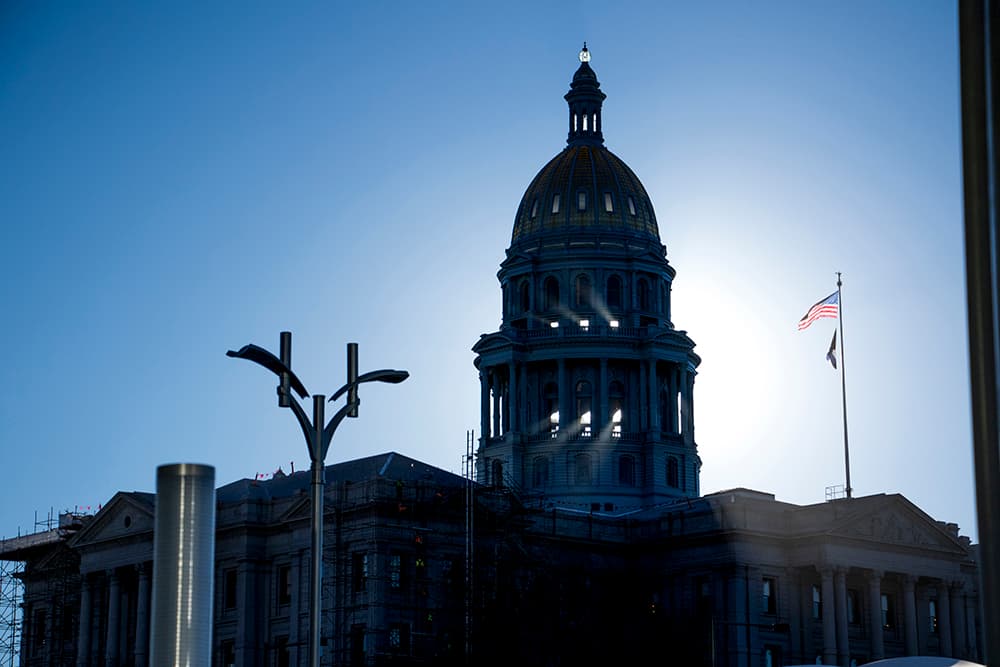At some point before he was expelled by his colleagues in the House on Friday, former representative Steve Lebsock decided to officially switch his party affiliation from Democrat to Republican, throwing a goodbye wrench at an already complicated situation.
Lebsock, who was elected as a Democrat, switched party affiliation to Republican at about 3:17 p.m. on Friday, before the vote to expel him following accusations from five women who accused him of sexual harassment and unwanted touching. The vote was made after hours of dramatic and emotional deliberation from his colleagues, and raises the question of which party will ultimately be able to fill the seat.
Lebsock’s move caught Republicans by surprise, Colorado Republican Party communications director Daniel Cole said Monday via text message. After research, Cole said the party found they have the right, under state statute, to fill the seat. They expect to announce this week how they intend to proceed.
"Immediately, we had to scramble to figure out what the switch meant for how his seat would be filled," Cole said. "It didn't take long to confirm that state statute assigns our Republican House District 34 vacancy committee the power to fill it. The vacancy committee has 30 days from the day of the vacancy to fill it, or until April 1. Otherwise the appointment lands on the governor's desk."
Colorado Democrats, who before the vote had issued a statement calling for his resignation, said Friday they were starting to explore their options.
"As far as Lebsock goes, the Republicans can have him," Colorado Democrats communication manager Erik Walker said in a statement. "As far as the seat, we're looking into it. Either way, we're confident the district will be represented by a Democrat by the time the next session begins."
Without citing specific options, Walker added in an email that the party is, "still exploring their legal options."
There were hints that Lebsock might consider a move even before the vote. He thanked Republicans for their support in a tweet January, and said he would not caucus with Democrats.
What is a vacancy committee?
Cole said a vacancy committee is group comprised of a party’s central committee in each district (the central committee typically includes the most involved members in their district). They're tasked with appointing a new representative in the event of a vacancy caused by death, resignation and expulsions.
For example, following Pam Mazanec’s resignation from the State Board of Education in January, a Republican vacancy committee for the Fourth Congressional District convened Feb. 17 to appoint a new representative for her seat (they chose Dr. Deb Scheffel). It will fall to Republican House District 34’s vacancy committee to choose a new representative, unless they miss their deadline, wherein it becomes Gov. John Hickenlooper’s choice.
Still, University of Denver political science professor Seth Masket said the situation is, “uncharted territory.” Colorado and Illinois are the only two states who have vacancy committees, which Masket said gives the party of the legislator who’s leaving the right to replace them.
"You get these local party replacement committees who quickly replace the candidate and its usually not controversial," Masket said.
The “legal options” Walker mentioned are one way that Masket said Democrats could have “some basis to challenge” the Republicans’ pick to replace Lebsock. That could potentially entail requesting a judge make some kind of ruling that would prevent the GOP’s recommendation.
If Republicans are successful in filling the seat, it won’t affect the balance of power in the House. It would remain a Democratic majority, albeit to a narrower one.
“There should be only marginal impact,” Masket said. “You got the two months remaining in the legislative session. I think someone ... could come up with a replacement but whoever that person is, (they) would still be able to vote on key pieces of legislation.”
The 71st General Assembly first convened for its current session on Jan. 10 and will end May 10.
Changing party affiliations isn’t totally unheard of, but it's still rare.
Secretary of State spokeswoman Lynn Bartels said in an email that Colorado was among the first states in the nation allowing online voter registration, which made switching parties fairly simple.
“All he had to do was go online and push a button,” Bartels said in the email.
Lebsock is actually second member of the Colorado General Assembly to switch party affiliations within the last few months.
State Sen. Cheri Jahn announced she had left the Democratic Party in December, citing the shift to a more, “partisan and polarized,” state and local politics, according to Colorado Politics. Back in 2007, former state rep Debbie Stafford flipped from red to blue. The Denver Post reported one of the reasons Stafford left was because of the way Republican leadership had treated her, including allegations she was retailed against for a vote breaking from the party.
Perhaps the most infamous example of politicians in Colorado switching party is the case of former U.S. Sen. Ben Nighthorse Campbell. While serving in Congress, Campbell switched from the Democratic Party to the Republican Party in March 1995, earning him a really unflattering nickname among some Dems.













